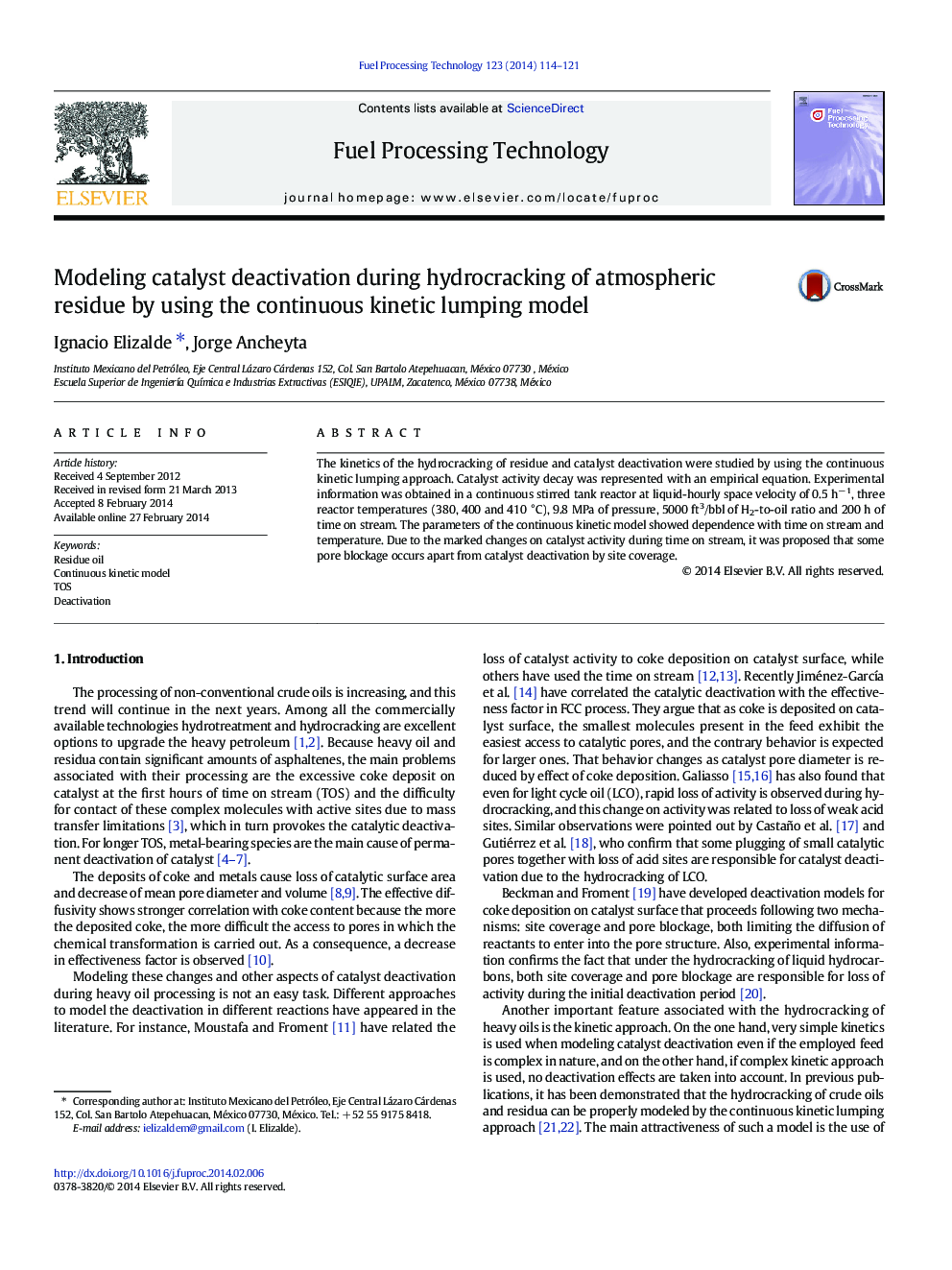| Article ID | Journal | Published Year | Pages | File Type |
|---|---|---|---|---|
| 209687 | Fuel Processing Technology | 2014 | 8 Pages |
•Catalyst deactivation during hydrocracking was studied.•The continuous kinetic lumping approach was used for kinetic modeling.•Sites coverage and pore blockage were considered.•Model parameters showed dependence with time on stream and temperature.
The kinetics of the hydrocracking of residue and catalyst deactivation were studied by using the continuous kinetic lumping approach. Catalyst activity decay was represented with an empirical equation. Experimental information was obtained in a continuous stirred tank reactor at liquid-hourly space velocity of 0.5 h− 1, three reactor temperatures (380, 400 and 410 °C), 9.8 MPa of pressure, 5000 ft3/bbl of H2-to-oil ratio and 200 h of time on stream. The parameters of the continuous kinetic model showed dependence with time on stream and temperature. Due to the marked changes on catalyst activity during time on stream, it was proposed that some pore blockage occurs apart from catalyst deactivation by site coverage.
